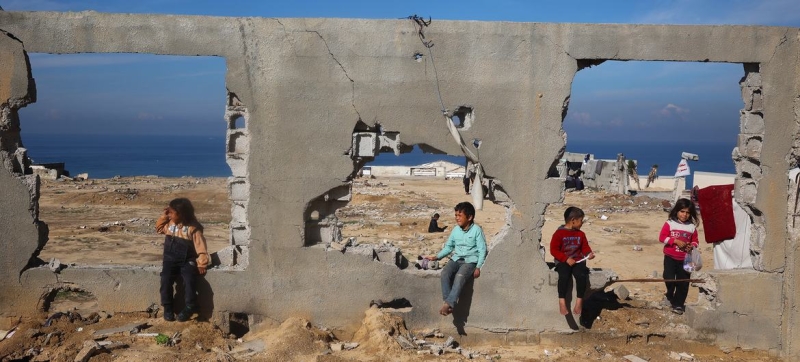
The needs of the population in war-torn Gaza are still enormous. Gaza: In addition to humanitarian aid, commercial goods must enter the enclave Humanitarian aid
Aid supplies continue to arrive in Gaza, but needs remain enormous after 15 months of Israeli bombing.
Amid conflicting reports about the stability of the ceasefire, the UN Office for the Coordination of Humanitarian Affairs (OCHA) said aid teams were “exploiting every opportunity” to deliver as much humanitarian aid as possible to Gazans.
Speaking in the northern part of the sector, OCHA spokesman René Nijenhuis said that what locals want above all is for the regime to be respected. He explained that the fragile ceasefire had allowed aid teams to reach those desperately waiting for help. “They need housing, they need schooling,” Nijenhuis said.
600 trucks enter Gaza every day
Since the beginning of the ceasefire, some 600 trucks carrying food, medicine and other supplies have entered the Gaza Strip every day, far outstripping the aid flow during the fighting that followed the Hamas attack on Israel on October 7, 2023.
More than 800 trucks delivered essential supplies into Gaza on Wednesday alone, OCHA said, while the United Nations Relief and Works Agency for Palestine Refugees in the Near East (UNRWA) said that since the ceasefire began, food has been delivered to 1.5 million people.
Restart the economy
At the same time, humanitarian organizations stress that aid alone is not enough; more commercial goods must enter Gaza.
“Commercial goods need to come in so that the markets can be filled. We need the cash sector and the banking sector to get going again so that people can buy these commercial goods,” UNICEF Communications Manager Tess Ingham told UN News Service.
Restoring Utilities
The United Nations Children’s Fund (UNICEF) also stresses that restoring utilities requires equipment that is not yet allowed into the enclave.
“We need to make sure that some of the items that are currently restricted from entering Gaza can be brought in, such as pipes to repair the water systems, generators to run the water pumps,” explained Ingham, who was in the Strip on a two-week assessment mission.
She said UNICEF’s three priorities are providing water, health care and nutrition, and protection from the cold.
“We are focused on getting the water flowing again, especially in areas where the water system has been badly damaged. “There were damage to pipes and wells in the northern part of the Strip and in Rafah, so we are trying to restore the water supply by repairing it and also by delivering water by truck,” Ingam said.
Shelter and heat for displaced people
According to humanitarian organizations, since Israeli troops withdrew from parts of the Netzarim corridor dividing the north and south of Gaza, more than 586,000 people have returned to the northern part of the Strip and 56,000 to the south.
UNRWA operates 120 shelters, which are home to about 120,000 people. The agency also opened 37 new shelters, including seven in Gaza City and 30 in northern Gaza, and on Thursday announced the reopening of a health centre in Rafah.
UNRWA says 644,000 people have received shelter assistance, tents, plastic sheeting, insulation, tarpaulins, blankets and warm clothing since the ceasefire began.
